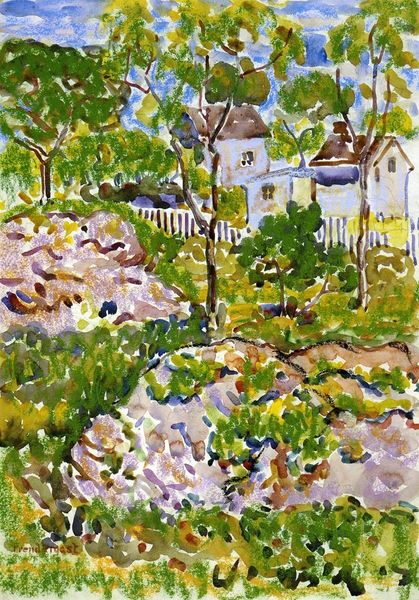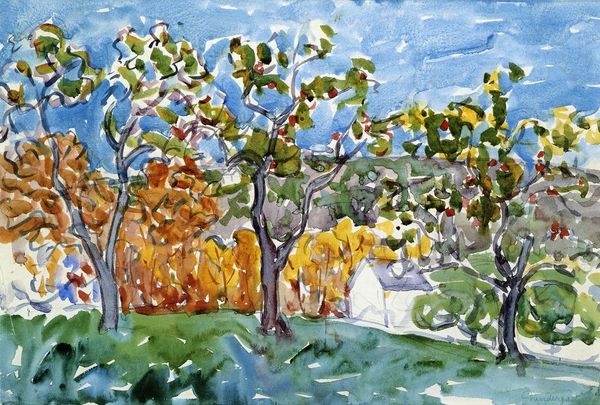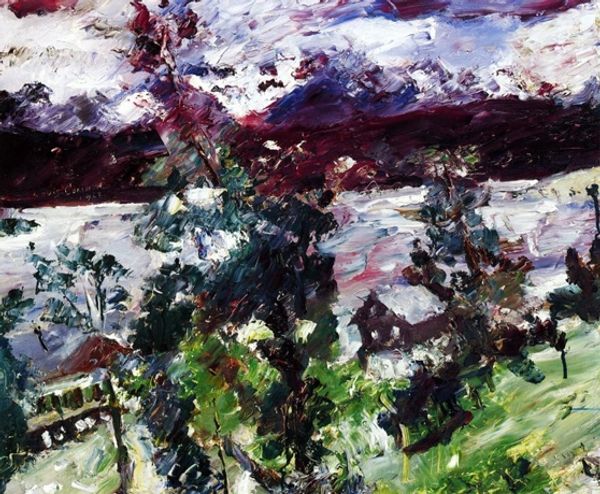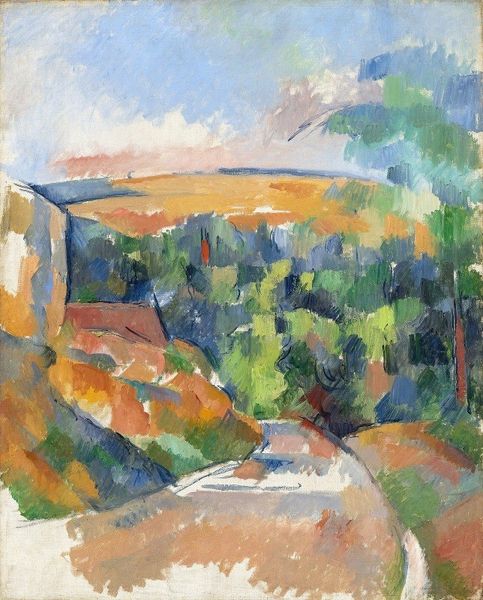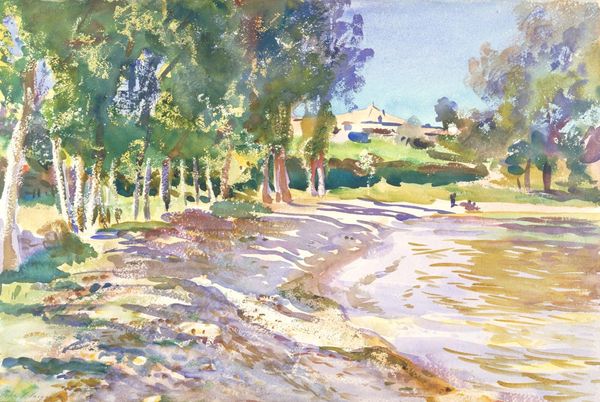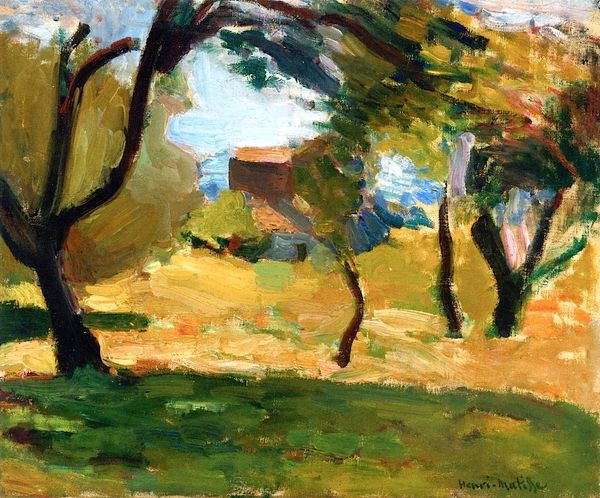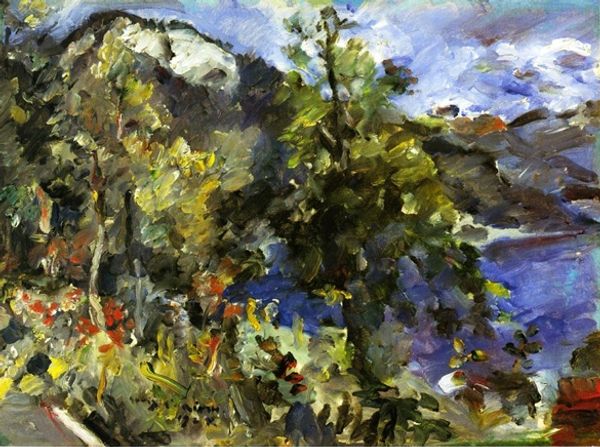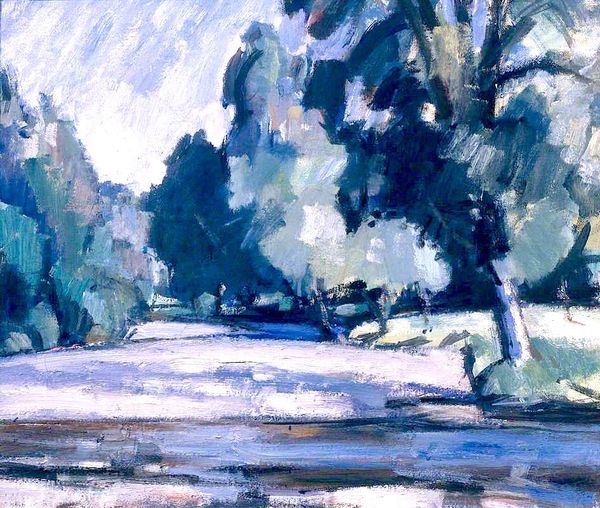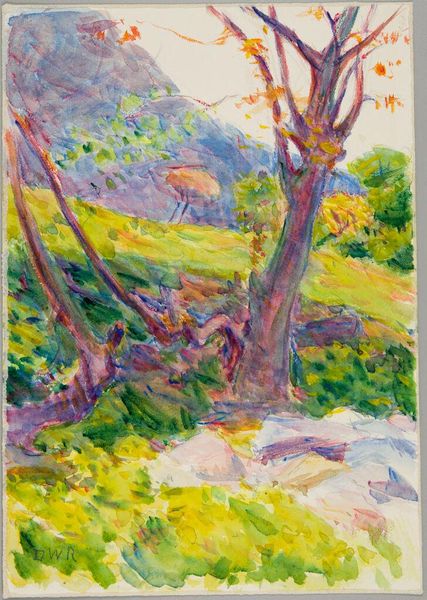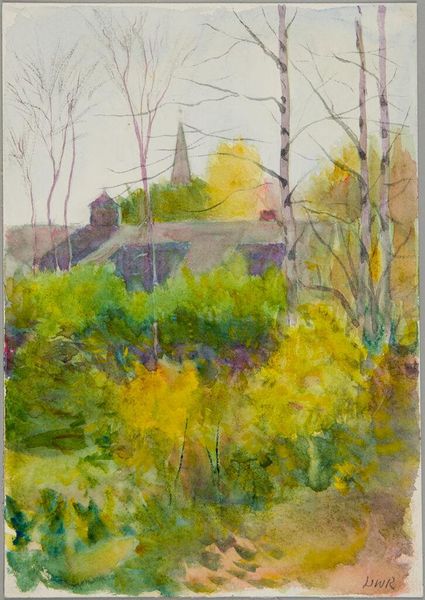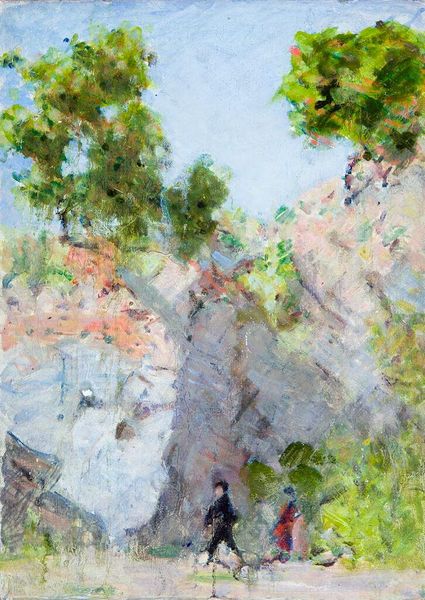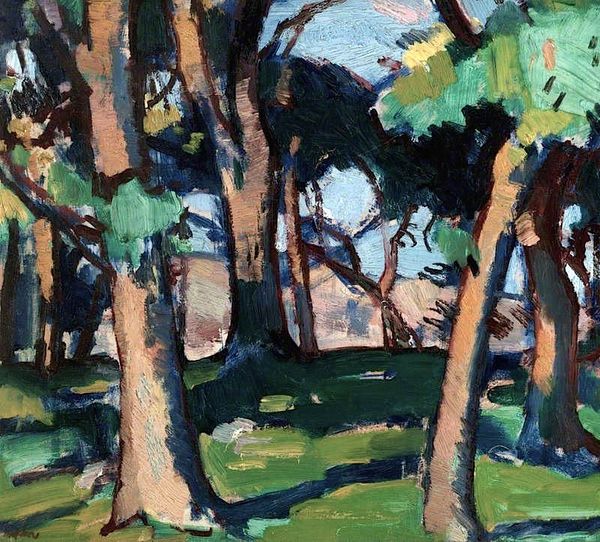
Copyright: Public domain
Editor: We're looking at "Mont Sainte-Victoire Seen from les Lauves," painted by Paul Cézanne around 1905 using oil paint. I'm immediately drawn to the almost geometric rendering of the landscape, it feels very modern. What do you make of Cézanne’s choices here? Curator: The power of this piece resides in Cézanne's fracturing of form. Notice how he reduces the landscape into distinct planes of color. This isn't about a faithful representation; it's about exploring the inherent structure of visual experience. Do you see how the brushstrokes operate almost independently, yet collectively define the image? Editor: Yes, each stroke seems deliberately placed, like individual tiles in a mosaic. Is he deliberately avoiding a smooth, blended appearance? Curator: Precisely. He prioritizes the materiality of the paint and the act of seeing. Consider the flattening of space; traditional perspective is subverted, creating a tension between two-dimensionality and the illusion of depth. We can see the influence of modernism. What philosophical concepts do you believe inform the geometry? Editor: It almost anticipates Cubism. He seems to be analyzing and reconstructing the mountain in his own way. Are there connections with structuralism? Curator: Precisely. Cézanne provides a clear structural composition as if building the artwork into a structure of shapes that represent it, but also reassemble themselves. We could argue it uses semiotics of natural landscapes by deconstructing our typical expectation of the use of nature, light, shade, and color. Editor: That’s fascinating. I see so much more in the structure and materiality than I did at first glance. Curator: Indeed. By analyzing the formal elements, we can unravel the deeper complexities within seemingly simple landscapes.
Comments
No comments
Be the first to comment and join the conversation on the ultimate creative platform.
